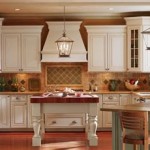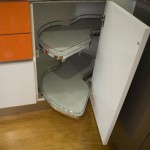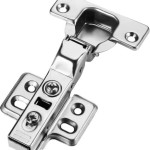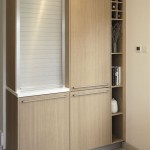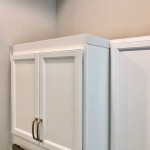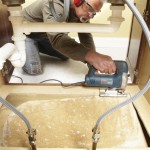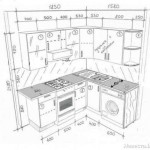How Do I Identify Kitchen Cabinet Hinges Work?
Kitchen cabinet hinges are a crucial element in the functionality and overall design of any kitchen. These hinges enable the smooth opening and closing of cabinet doors, ensuring easy access to stored items and contributing to the practical use of the kitchen space.
Understanding the different types of kitchen cabinet hinges and their mechanisms can help you make informed decisions when selecting and installing hinges for your cabinets. By learning how these hinges work, you can ensure proper installation and maintenance, prolonging the life of your cabinets and maintaining their aesthetic appeal.
1. Hinge Mechanism:
Kitchen cabinet hinges generally work on a simple yet effective mechanism that allows for the controlled opening and closing of cabinet doors. Here are the fundamental components of a typical hinge mechanism:
- Cup: The cup is the part of the hinge that is mounted inside the cabinet. It provides a secure foundation for the hinge and allows for smooth movement of the door.
- Knuckle: The knuckle is the joint that connects the cup to the hinge arm. It enables the door to open and close with a fluid motion.
- Arm: The arm is the part of the hinge that is attached to the cabinet door. It provides support to the door and ensures it opens and closes correctly.
- Mounting Plate: The mounting plate is attached to the inside of the cabinet door. It provides a sturdy base for the hinge arm and is essential for securing the hinge to the door.
2. Types of Kitchen Cabinet Hinges:
There are various types of kitchen cabinet hinges available, each with its unique features and applications. Here are some common types of hinges you may encounter:
- Butt Hinges: These are the most basic type of hinge, consisting of two metal plates joined by a knuckle. They are typically used for inset cabinet doors, where the door sits inside the cabinet frame.
- Overlay Hinges: These hinges are used for overlay cabinet doors, where the door overlaps the cabinet frame. They provide a clean and modern look and are often used in contemporary kitchen designs.
- Concealed Hinges: Concealed hinges are hidden from view when the cabinet door is closed, creating a seamless and minimalist appearance. They are popular in kitchens with modern or minimalist design aesthetics.
- Blum Hinges: Blum hinges are a popular brand of high-quality hinges known for their durability, functionality, and innovative features. They offer a wide range of hinge options, including soft-close and self-closing mechanisms.
3. Factors to Consider When Selecting Kitchen Cabinet Hinges:
When choosing kitchen cabinet hinges, several factors need to be considered to ensure proper functionality and aesthetic appeal. Here are some key aspects to keep in mind:
- Cabinet Door Weight: Choose hinges that are rated to support the weight of your cabinet doors. This ensures the hinges can handle the stress and strain of regular use.
- Cabinet Door Thickness: Ensure the hinges you select are suitable for the thickness of your cabinet doors. Incorrect hinge dimensions can lead to improper installation and poor door alignment.
- Cabinet Design: Consider the overall design of your kitchen cabinets and choose hinges that complement the style. Concealed hinges, for example, may be a better choice for a modern kitchen, while butt hinges may be more suitable for a traditional or rustic design.
- Soft-Close or Self-Closing Mechanisms: Soft-close or self-closing hinges prevent cabinet doors from slamming shut, reducing noise and wear and tear on the hinges and cabinet door. These mechanisms can be a valuable addition to your kitchen, especially if you have children or prefer a quieter environment.
4. Proper Installation and Maintenance:
Correct installation and regular maintenance of kitchen cabinet hinges are crucial for ensuring longevity and optimal functionality. Here are some tips for proper installation and care of cabinet hinges:
- Accurate Measurement and Marking: Use a level and measuring tape to accurately mark the locations for hinge installation. Incorrect measurements can lead to misalignment and improper door operation.
- Use Appropriate Tools: Ensure you have the right tools for the job, such as a drill, screwdriver, and level. Using the correct tools helps ensure precise installation and prevents damage to the hinges or cabinet.
- Follow Manufacturer Instructions: Carefully read and follow the manufacturer's instructions for installing the hinges. Each hinge type may have specific installation requirements or adjustments that need to be made.
- Regular Maintenance: Periodically inspect the hinges for signs of wear or damage. Tighten any loose screws and lubricate moving parts with a suitable lubricant to maintain smooth operation and prevent premature wear.
Conclusion:
Kitchen cabinet hinges play a crucial role in the functionality and aesthetics of your kitchen. Understanding how these hinges work and the different types available can help you make informed decisions when selecting and installing hinges for your cabinets. By considering factors such as cabinet door weight, thickness, design, and desired features, you can choose hinges that provide reliable performance and enhance the overall beauty and functionality of your kitchen.

Types Of Cabinet Hinges The Home Depot

5 Common Types Of Cabinet Hinges For Purchasing

How To Install Concealed Hinges Painting By The Penny

Glimpse Through The Various Types Of Hinges For Cabinets Mccoy Mart

How To Install Cabinet Hinges A Step By Guide

Types Of Cabinet Hinges The Home Depot

5 Common Types Of Cabinet Hinges For Purchasing

Types Of Cabinet Hinges The Home Depot

Types Of Cabinet Hinges The Home Depot

Which Hinge Do You Need For Cabinet Cupboard Doors
Related Posts

